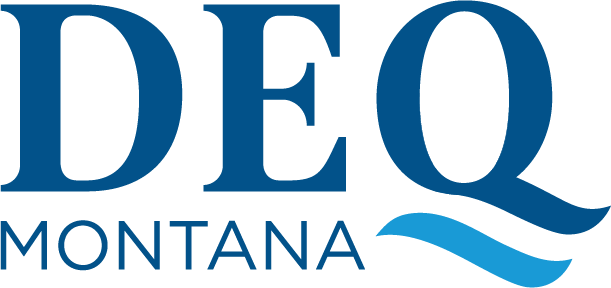Program Overview
Great things are happening in communities across Montana! With support from our congressional leadership, increased Federal funding allows Montana’s DEQ Brownfields Program to help revitalize contaminated properties in small and rural communities near you.
The Montana DEQ Brownfields program, at its core, is an economic, social, and environmental redevelopment assistance program. The program's focus is on turning environmental liabilities into economic drivers for communities. Brownfields assistance catalyzes revitalization and redevelopment of contaminated and underutilized properties which results in:
- Improving public health and the environment
- Creating economic opportunities and jobs by sparking private investment along rural Main Street and within urban downtowns
- Revitalizing communities by preserving historic structures, eliminating blight, and providing spaces for critical community services such as new housing, recreational destinations, healthcare centers, and childcare facilities
The Brownfields Program provides assessment, planning, and cleanup assistance at properties such as former gas stations, vacant historic buildings, and former commercial/industrial sites.
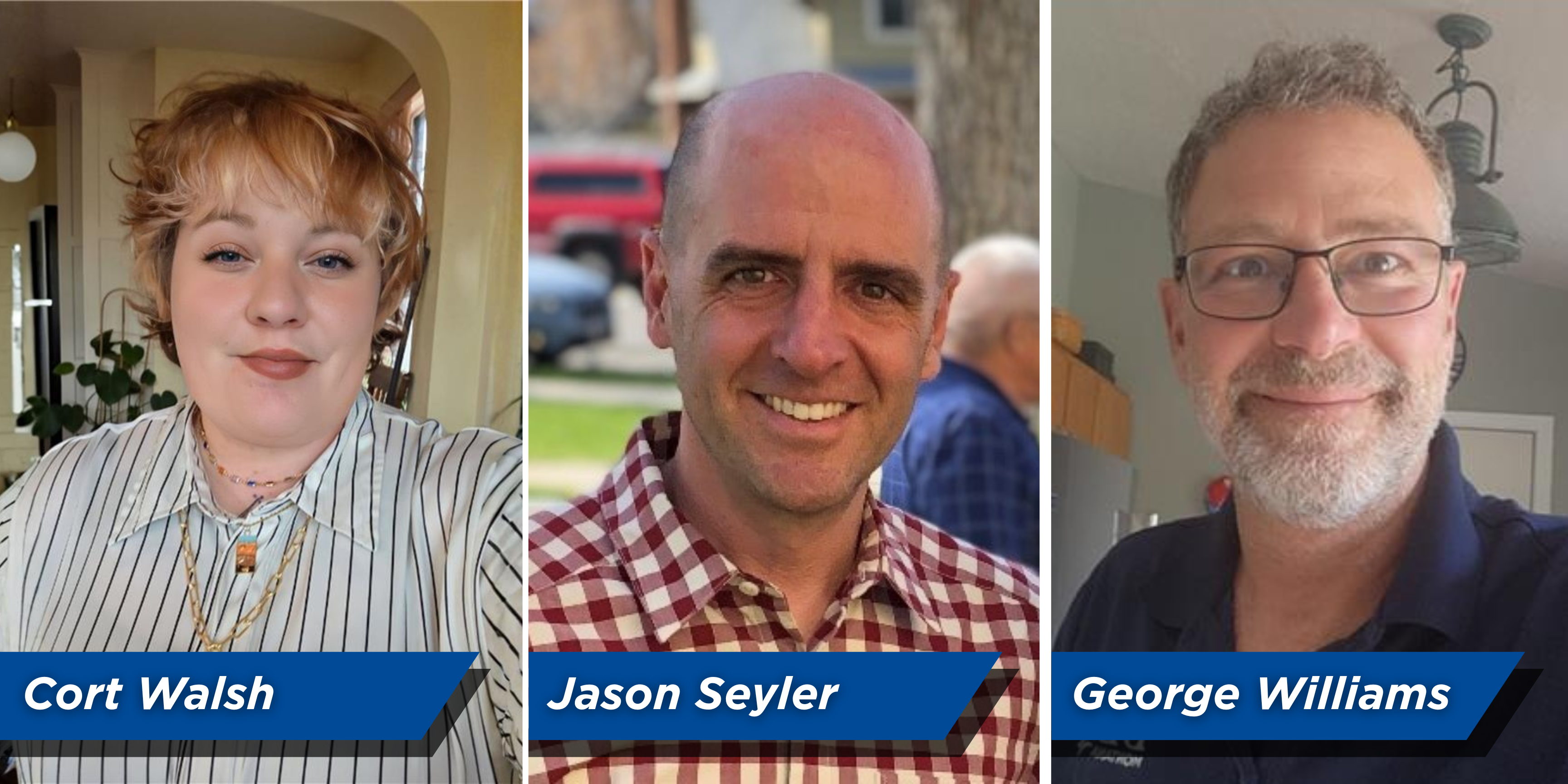
| County | Regional Contact |
|---|---|
| Beaverhead County | Cort Walsh |
| Big Horn County | Jason Seyler |
| Blaine County | Cort Walsh |
| Broadwater County | Jason Seyler |
| Carbon County | Jason Seyler |
| Carter County | Cort Walsh |
| Cascade County | George Williams |
| Chouteau County | Cort Walsh |
| Custer County | Cort Walsh |
| Daniels County | Cort Walsh |
| Dawson County | Cort Walsh |
| Deer Lodge County | Cort Walsh |
| Fallon County | Cort Walsh |
| Fergus County | Jason Seyler |
| Flathead County | George Williams |
| Gallatin County | Jason Seyler |
| Garfield County | Cort Walsh |
| Glacier County | George Williams |
| Golden Valley County | Jason Seyler |
| Granite County | Cort Walsh |
| Hill County | Cort Walsh |
| Jefferson County | Cort Walsh |
| Judith Basin County | Jason Seyler |
| Lake County | George Williams |
| Lewis and Clark County | Jason Seyler |
| Liberty County | Cort Walsh |
| Lincoln County | George Williams |
| Madison County | Cort Walsh |
| McCone County | Cort Walsh |
| Meagher County | Jason Seyler |
| Mineral County | George Williams |
| Missoula County | George Williams |
| Musselshell County | Jason Seyler |
| Park County | Jason Seyler |
| Petroleum County | Jason Seyler |
| Phillips County | Cort Walsh |
| Pondera County | George Williams |
| Powder River County | Cort Walsh |
| Powell County | Cort Walsh |
| Prairie County | Cort Walsh |
| Ravalli County | George Williams |
| Richland County | Cort Walsh |
| Roosevelt County | Cort Walsh |
| Rosebud County | Cort Walsh |
| Sanders County | George Williams |
| Sheridan County | Cort Walsh |
| Silver Bow County | Cort Walsh |
| Stillwater County | Jason Seyler |
| Sweet Grass County | Jason Seyler |
| Teton County | George Williams |
| Toole County | George Williams |
| Treasure County | Cort Walsh |
| Valley County | Cort Walsh |
| Wheatland County | Jason Seyler |
| Wibaux County | Cort Walsh |
| Yellowstone County | Jason Seyler |
Brownfields Contacts
General questions? Email deq.brownfields@mt.gov
Section Supervisor
Katie Morris (406) 541-9017
DEQ Brownfields Coordinator
Jason Seyler (406) 444-6447
DEQ Brownfields Coordinator
Cort Walsh (406) 444-6639
DEQ Brownfields Coordinator
George Williams (406) 218-7410
Brownfield Success Stories
Circle T Taproom - Big Timber, Montana
This was the site of the old Conoco gas station in Big Timber. A developer recognized that it was a great location for redevelopment but was concerned about past operations as an old gas station and its active petroleum release.
Brownfields was able to complete a targeted brownfields assessment where the work could be applied toward the Petroleum Fund co-pay. Knowing that once the co-pay was met and future petroleum related cleanup expenses could be covered by the Petroleum Fund, the developer had the assurance to move forward with the purchase and redevelopment of the property.
Before & After:
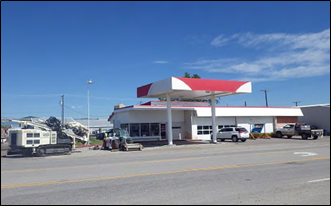
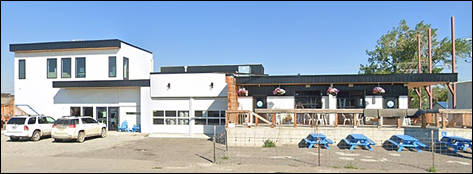
Uptown Dairy Queen - Butte, Montana
The former Central Service Gas Station, built in 1925, operated as a gas station and automotive service center until the 1980s. Once the service station closed, the building sat vacant or was used for storage until 2020 when Headwaters RC&D used Brownfields funding to assess the building for hazardous building materials and surrounding soils for petroleum contamination. The assessment results found no petroleum release, but did identify asbestos on the interior and exterior of the building.
With reassurances that there was not an expensive petroleum release, the property sold, and the new owner abated the minimal asbestos. Following asbestos abatement, the building was demolished and the property was redeveloped into a thriving business, the DQ Grill & Chill, in historic uptown Butte.
Before & After:

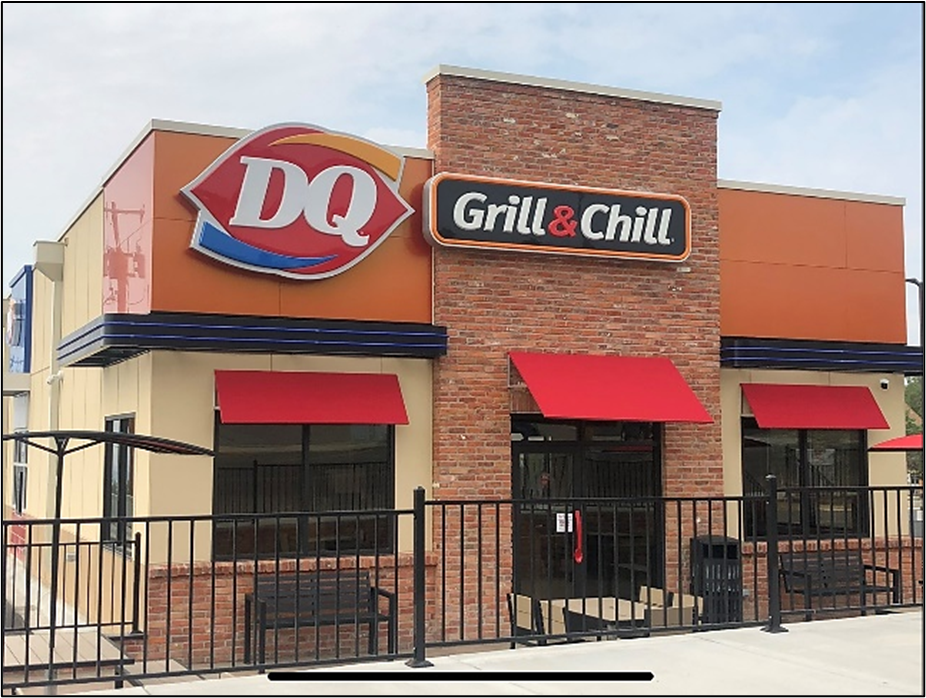
Crowley Building - Lewiston, Montana
A Brownfields hazardous building assessment found lead-based paint and asbestos in this historic department store and apartment building in downtown Lewistown. Snowy Mountain Development Corporation, a local Brownfields grantee, was able to provide the non-profit developer a grant and loan for the abatement of lead and asbestos. Once cleaned, One Health and Homeword were able to renovate and redevelop this historic building into a new public health clinic on the main floor and Affordable Housing apartments in the upstairs.
Before & After:
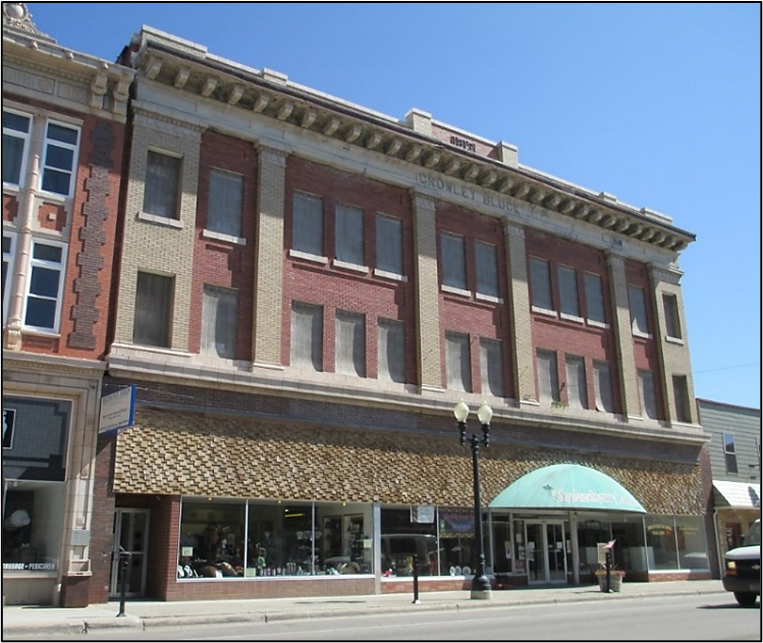
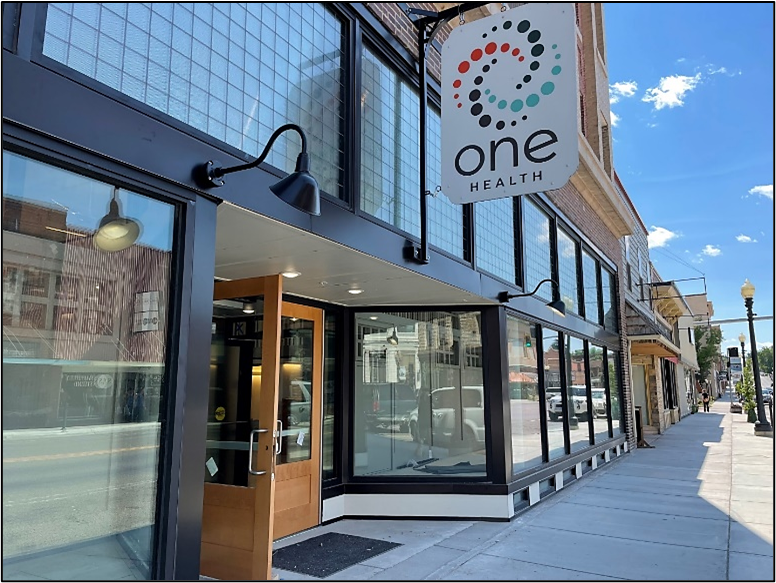
Big Sandy Library - Big Sandy, Montana
A Brownfields investigation was completed to determine what hazardous building materials remained at the old Kaste’s Department Store in downtown Big Sandy. Following the removal of some asbestos floor tiles, and building demolition, the community did a great deal of planning and self-funded the redevelopment of the property into the new Big Sandy Public Library.
Before & After:
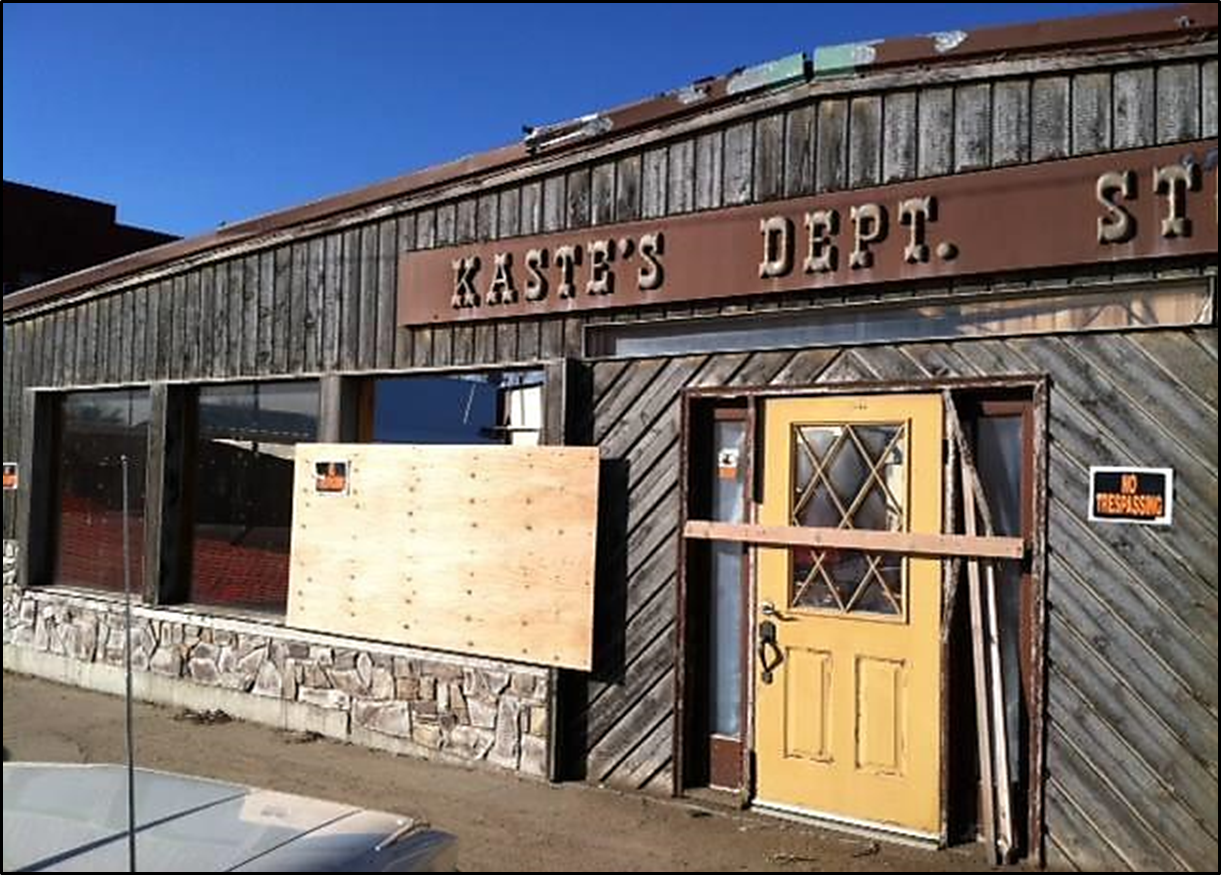
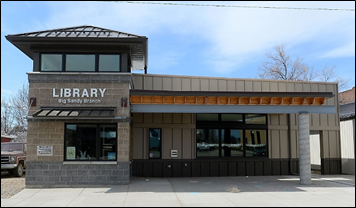
Parkline Trail - Kalispell, Montana
After nearly a decade since Kalispell city officials started making plans to transform the former Great Northern Railway line into a linear, multiuse trail, connecting Meridian Street and Woodland Park, the City was able to open a 1.7 mile trail. This entire project started off with the City of Kalispell receiving a Brownfields Planning grant and talking with local businesses and the community. This was followed up by the City assessing the rail line for contamination through a Brownfields Assessment grant. Some contamination was discovered near the historic silos which was addressed through a DEQ approved cleanup plan.
Before & After:
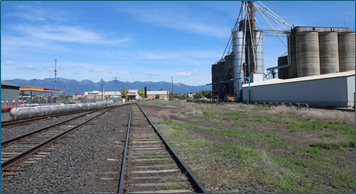
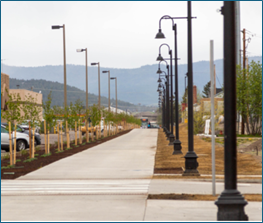
Alpenglow Apartments - Whitefish, Montana
Phase I and Phase II Environmental Site Assessments (ESAs) were completed prior to construction of the Alpenglow Apartments in 2021 on the west parcel of this property in Whitefish, Montana. With assistance from the Brownfields Program, this project was able to provide 38 affordable apartments through a partnership between Homeward and the Whitefish Housing Authority. Soil sampling as part of the Phase II ESA found lead exceeding the MT DEQ residential and leaching to groundwater soil screening levels on the east portion of the property. A Phase I ESA was recently completed by DEQ Brownfields and soil cleanup is planned in 2024 in anticipation of construction of the second phase of Alpenglow Apartments which will provide an additional 18 affordable apartments on the eastern portion of the property.
Before & After:
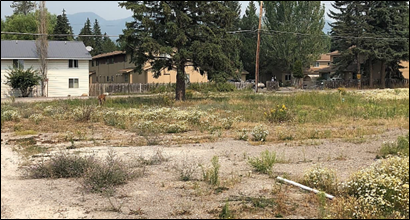
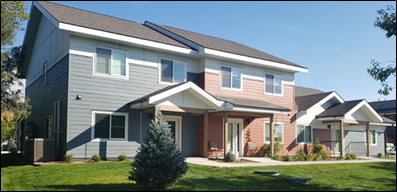
Ravalli Cash Store - Ravalli, Montana
Location: 82856 US Highway 93/205 Buffalo Street, Ravalli, Montana
The site historically operated as a recreational vehicle park, gasoline station, and convenience store. As part of a Phase II Environmental Site Assessment, a 3,000-gallon compartmentalized gasoline and diesel tank was removed from the property. Confirmation/closure samples indicated no petroleum-impacted soils were present.
DEQ sent a No Further Action Required Letter on June 26, 2023. The property is being redeveloped as a store, office, gallery space and will not dispense petroleum in the future.
Before & After:
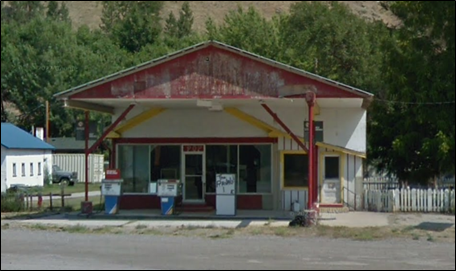
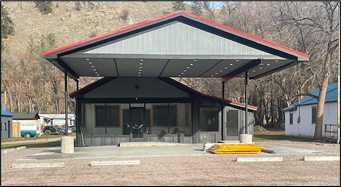
Real Estate Office - Livingston, Montana
This property in Livingston had been on the market for some time due to its historic use as a gas station. A perspective purchaser engaged the Brownfields program to complete an investigation and that put community speculation about contamination on the property to rest. The investigation found no contamination and DEQ was able to write a No Further Action letter that cleared the air regarding this property. The investigation and letter provided the perspective purchaser with enough confidence to move forward with redevelopment of the property which gave a spark of revitalization to this stretch of Park Avenue in Livingston. Not only did redevelopment increase the property value, but it also increased the tax base, added jobs and gave a new look to this neighborhood in Livingston.
Before & After:
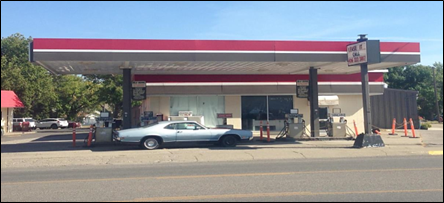
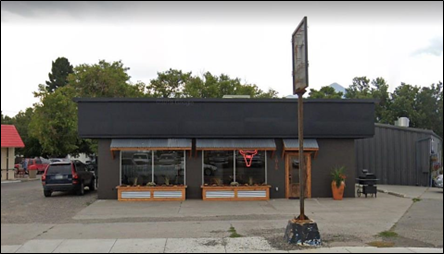
Arvon Block - Great Falls, Montana
Constructed from 1889 to 1890 by wealthy rancher and city booster Robert Vaughn, the Arvon Block was the oldest livery (hotel/stables) in the City of Great Falls. With the help of a hazardous building materials assessment and a low-interest cleanup loan from Great Falls Development Authority’s Brownfields program, local developers were able to transform the abandoned hotel into what is now the Hotel Arvon and Celtic Cowboy restaurant and pub. This development has sparked the transformation of many other buildings in this previously struggling part of downtown.
Before & After:

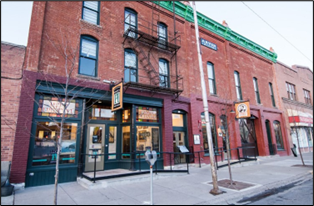
Laurel Depot Apartments - Laurel, Montana
What was once a single-family home in Laurel Montana is now being transformed into 24 (one-, two-, and three-bedroom) apartments that the local community can afford. DEQ Brownfields assisted a Montana based affordable-housing developer perform the required U.S. Department of Housing and Urban Development environmental due diligence prior to the start of this affordable housing project. The expected grand opening is scheduled for March of 2024.
Before & After:


EPA’s Brownfields Grantees and DEQ report site progress using the Assessment, Cleanup and Redevelopment Exchange System (ACRES). This mapper provides a complete view of the brownfields sites in Montana that have or are being addressed by DEQ, EPA, or other grantees throughout the state. If you have questions about a specific site, reach out to the DEQ brownfields team.
EPA awards brownfields grant funding to communities throughout the United States. These grants support revitalization efforts by funding environmental assessment, cleanup, and job training activities.
- Brownfields Assessment Grants - provide funding for brownfield inventories, planning, environmental assessments, and community outreach.
- Brownfields Revolving Loan Fund Grants - provide funding to capitalize loans and grants used to clean up brownfields.
- Brownfields Job Training Grants - provide funding to conduct environmental training for residents of brownfields communities.
- Brownfields Cleanup Grants - provide direct funding for cleanup activities at brownfield sites.
More information on each type of grant is provided below.
These grants are awarded annually through a competitive process with the grant deadline sometime each fall. Eligible applicants must submit a grant proposal that addresses all the requirements detailed in EPA’s proposal guidelines. Proposals are evaluated and ranked by evaluation panels. These panels evaluate each proposal according to set criteria. The highest-ranking proposals are then awarded grants.
EPA awards separate grants for assessment and cleanup of properties that have been contaminated with hazardous substances and those properties that are contaminated with petroleum products. Examples of hazardous substances include asbestos, solvents, metals and controlled substances such as methamphetamine. Petroleum-contaminated properties are commonly abandoned gas stations with underground storage tanks, as well as properties with aboveground storage tanks, such as bulk plants. Some properties may be contaminated with a mix of both hazardous substances and petroleum contamination. For these properties with ‘co-mingled’ contamination, EPA allows applicants to apply for two grants for the same property, or apply for a hazardous substance grant for co-mingled contaminants.
Grant Guidelines are available for downloading in either HTML or PDF format.
In order to apply for a grant, the site must meet certain qualifications:
- Be a clear benefit to the community
- Applicant must not have contributed to the contamination
- Must meet the definition of a brownfields site
Additional petroleum site requirements:
- Have “no viable responsible party”
- Be assessed, investigated, or cleaned up by a person not potentially liable for the contamination
- Not be subject to a corrective action order under the Resource Conservation and Recovery Act
- Not be funded by the leaking underground storage tank trust fund (LUST Trust)
Sites not eligible:
- Sites listed or proposed for listing on the National Priorities List (Federal Superfund)
- Sites subject to unilateral administrative orders, court orders, administrative orders on consent or judicial consent decrees issued to or entered into by parties under CERCLA
- Sites that are subject to the jurisdiction, custody or control of the United States Government
Eligible Applicants
| Type of Applicant | Assessment | RLF | Remedial Cleanup | Job Training |
|---|---|---|---|---|
|
Local governments |
X |
X |
X |
X |
|
Land clearance authority or other quasi-governmental entity that operates under the supervision and control of, or as an agent of local government |
X |
X |
X |
X |
|
Government entity created by state legislature |
X |
X |
X |
X |
|
Regional councils |
X |
X |
X |
X |
|
Redevelopment agencies sanctioned by the State of Montana |
X |
X |
X |
X |
|
The State of Montana |
X |
X |
X |
X |
|
Indian tribes |
X |
X |
X |
X |
|
Nonprofit organizations |
|
|
X |
X |
Brownfields Assessment Grants
Assessment grants provide funds for inventory, characterization and assessment of brownfields properties. Assessment grant funds may also be used to develop cleanup plans and conduct community involvement related to brownfield properties. Assessment grants may not be used for actual cleanup. Assessment grants may be used to address sites contaminated by petroleum or hazardous substances, including hazardous substances co-mingled with petroleum. An entity may apply for a community-wide or site-specific grant. Community-wide assessment grant funding can be used to conduct a number of assessments on more than one property. Site-specific grant funding can only be used on the site identified in the grant application. The performance period for these grants is three years.
Assessment grant applicants may apply for up to $200,000. Applicants may seek a waiver to this limit and request up to $350,000. Such waivers must be based on the anticipated level of contaminants at a single site.
Brownfields Revolving Loan Fund Grants
Eligible entities may apply for grant funding to establish a revolving loan fund. An RLF works by lending money to public and private borrowers to finance cleanup at brownfields properties. Loan payments of the principal and interest are then paid back into the RLF loan fund pool by the borrowers. An RLF may be capitalized for up to $1 million and the performance period is 5 years.
In addition to loans, a portion of the loan pool may be used for subgrants to eligible entities and nonprofit organizations. These subgrants do not require repayment to the loan pool. RLF subgrant applicants must own the site for which they are seeking funding by the time the award is made. RLF loans and subgrants may only be used for cleanup activities at eligible brownfields sites.
Brownfields Cleanup Grants
Cleanup grants provide funding to carry out cleanup activities at brownfield sites. An eligible entity may apply for up to $200,000 per site. No entity should apply for more than five cleanup grants. Cleanup grant applicants must also own the site for which they are seeking funding by the time the award is made. Cleanup grants may be used to address sites contaminated by petroleum or hazardous substances, including hazardous substances co-mingled with petroleum. The performance period for these grants is three years.
Cleanup grants require a 20 percent cost share of the amount of funding provided by EPA. The cost share may be in the form of a contribution of money, labor, material, or services, and must be for eligible and allowable costs. The cost share cannot include administrative costs or be matched by other federal grant funds. A cleanup grant applicant may request a waiver of the 20 percent cost share requirement based on hardship.
Brownfields Job Training Grants
Training grants provide funding for environmental job training projects that will facilitate site assessments, remediation of brownfields properties, community involvement, or site preparation. To help ensure that economic benefits derived from brownfields revitalization efforts remain in local neighborhoods, EPA requires that job training grant applicants propose to serve a community that currently receives, or has received financial assistance from EPA’s other brownfields competitive grants. Training grants are intended to foster employment of trainees from socio-economically disadvantaged communities, provide quality worker-training, and give local residents an opportunity to qualify for jobs developed in environmental fields as a result of brownfields efforts.
An eligible entity may apply for up to $200,000. The project must be completed within 12 to 24 months.
A targeted brownfields assessment is an environmental assessment of a brownfields site. A TBA may consist of a phase I site assessment; a phase II site assessment; and/or development of cleanup plans, including cost estimates. Both DEQ and EPA have funding available for TBAs. For an eligible entity, DEQ or EPA has one of their contractors conduct the work.
A site must meet the following qualifications to be considered for a TBA:
- Be a clear benefit to the community
- Applicant must not have contributed to the contamination
- Must meet the definition of a brownfields site
Additional petroleum site requirements:
- Have “no viable responsible party”
- Be assessed, investigated, or cleaned up by a person not potentially liable for the contamination
- Not be subject to a corrective action order under the Resource Conservation and Recovery Act
- Not be funded by the leaking underground storage tank trust fund (LUST Trust)
If you are interested in applying for a TBA through DEQ, please contact a brownfields coordinator to discuss site and applicant eligibility. Site and applicant eligibility are determined with the information requested in the DEQ TBA application. If you are interested in applying for a TBA through the Federal EPA, you must fill out the EPA TBA Application. The applications can be found in "Brownfields Guidance and Forms."
What is a Brownfields?
How do I know if my site is eligible to receive Brownfields funding?
- The proposed project must be a clear benefit to the community
- The prospective grantee must not have contributed to the contamination
- Assistance is crucial to the redevelopment or reuse of the site
Also, if the site is contaminated with petroleum products, the site must:
- be of “relatively low-risk” compared to other petroleum-contaminated sites in the state
- have “no viable responsible party”
- be assessed, investigated, or cleaned up by a person not potentially liable for the contamination,
- not be subject to a corrective action order under Resource Conservation and Recovery Act
How do I determine if a site is eligible to receive Brownfields funding?
- If the site is a hazardous substance site, the determination is made by the EPA Brownfields Program
- If the site is a petroleum contaminated site, the determination is made by DEQ. Please consult DEQ’s Petroleum Brownfields Guidance document and submit the petroleum Brownfields eligibility determination form and submit to DEQ’s petroleum Brownfields Coordinator.
How long does it take DEQ to make a petroleum Brownfields eligibility determination?
How do I apply for brownfields funding and what can it be used for?
- Montana Targeted Brownfields Assessments: For a Montana targeted brownfields assessment, DEQ will hire one of its contractors to conduct an assessment of the property in question. An assessment may include a phase I assessment, phase II assessment and/or the establishment of cleanup options. Currently, DEQ will only consider targeted brownfields assessments for sites it is currently working on. Please contact DEQ to discuss its ability to conduct an assessment on the property in question. Then please submit the Montana TBA application.
- Environmental Protection Agency (EPA) Targeted Brownfields Assessments: For an EPA targeted brownfields assessment, EPA will hire one of its contractors to conduct an assessment of the property in question. An assessment may include a phase I assessment, phase II assessment and/or the establishment of cleanup options. The application to apply for an EPA targeted brownfields assessment can be obtained on EPA’s region 8 brownfields website.
- EPA competitive grants: Each year EPA solicits grant applications for assessment, cleanup, revolving loan funds and job training. EPA reviews these grant applications on a national basis and typically awards around $100 million each year. Assessment funding can be used for assessments and the establishment of cleanup options. Cleanup money can be used for actual cleanup of a site. A revolving loan fund can be used to provide grants and low-interest loans for cleanup at sites. Job training grants can be used to provide training regarding different environmental aspects. To find out when the next grant application process begins and to learn how to apply, go to EPA’s website.
- Request from an EPA competitive grantee within your target area either assessment or cleanup funds (which may be either subgranted or provided as a loan from a revolving loan fund). Please see the following link which is a searchable list for current cities and eligible entities that have brownfields funding.
Can Brownfields funds be used at a site that is also eligible to receive reimbursement from the petroleum tank cleanup release fund (Petro Fund)?
What are other common sources of funding used at Brownfields sites?
- Petro Fund – for assessment and cleanup funding
- DNRC Planning Grants – for assessment funding
- DNRC Cleanup Grants – for cleanup funding
How can I best leverage brownfields grant funds at petroleum sites?
- We recommend identifying all potential sources of funding at each site.
- We encourage all petroleum brownfields sites to apply for Petro Fund eligibility
- If a site is Petro Fund Eligible, grantees may only need to use grant funds to meet the Petro Fund copay, after which time the Petro Fund will reimburse costs deemed actual necessary and reasonable by the Petro Fund up to $1,000,000 . Please note that, grantees may be able to use brownfields funds on tasks that are not eligible for reimbursement from the Petro Fund.
- This approach ensures that the greatest quantity of sites can be cleaned up and redeveloped using the limited funding available.
